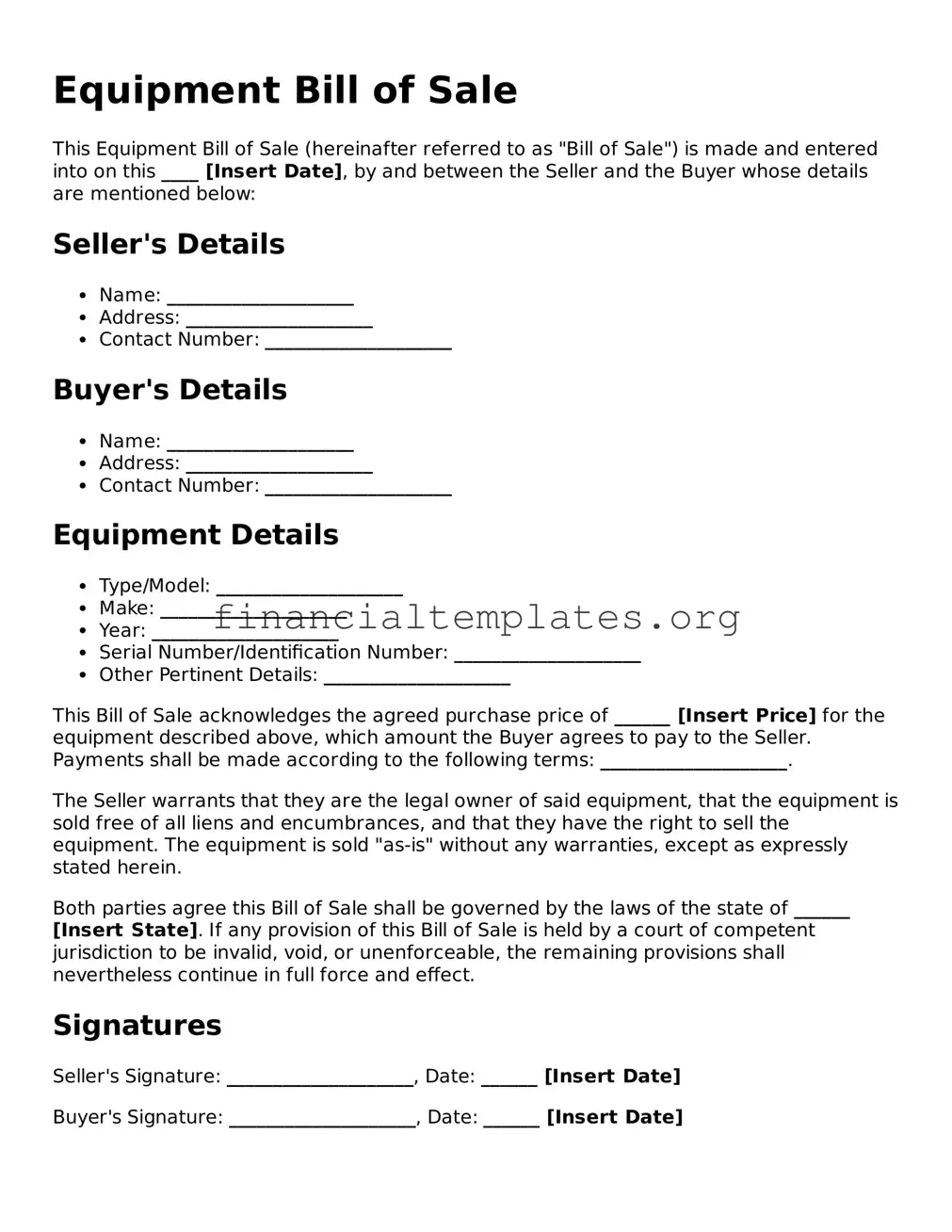Equipment Bill of Sale
This Equipment Bill of Sale (hereinafter referred to as "Bill of Sale") is made and entered into on this ____ [Insert Date], by and between the Seller and the Buyer whose details are mentioned below:
Seller's Details
- Name: ____________________
- Address: ____________________
- Contact Number: ____________________
Buyer's Details
- Name: ____________________
- Address: ____________________
- Contact Number: ____________________
Equipment Details
- Type/Model: ____________________
- Make: ____________________
- Year: ____________________
- Serial Number/Identification Number: ____________________
- Other Pertinent Details: ____________________
This Bill of Sale acknowledges the agreed purchase price of ______ [Insert Price] for the equipment described above, which amount the Buyer agrees to pay to the Seller. Payments shall be made according to the following terms: ____________________.
The Seller warrants that they are the legal owner of said equipment, that the equipment is sold free of all liens and encumbrances, and that they have the right to sell the equipment. The equipment is sold "as-is" without any warranties, except as expressly stated herein.
Both parties agree this Bill of Sale shall be governed by the laws of the state of ______ [Insert State]. If any provision of this Bill of Sale is held by a court of competent jurisdiction to be invalid, void, or unenforceable, the remaining provisions shall nevertheless continue in full force and effect.
Signatures
Seller's Signature: ____________________, Date: ______ [Insert Date]
Buyer's Signature: ____________________, Date: ______ [Insert Date]
This document, signed by both parties, serves as proof of sale and transfer of ownership of the equipment described above from the Seller to the Buyer. It is advised that both the Seller and the Buyer retain a copy of this Bill of Sale for their records.
